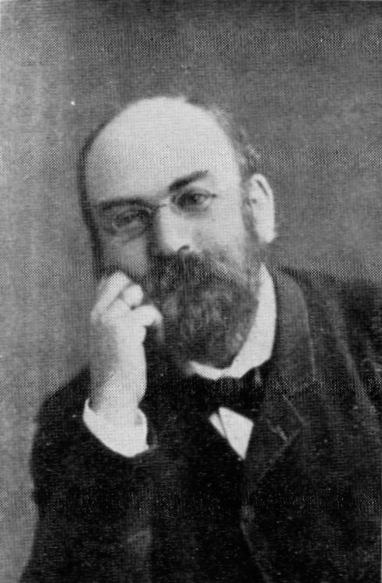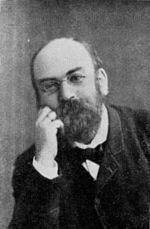Nationality French | Name Louis Javal | |
 | ||
Born May 5, 1839Paris ( 1839-05-05 ) Died January 7, 1907(1907-01-07) (aged 67) | ||
Louis Emile Javal
Louis Émile Javal (May 5, 1839 – January 20, 1907) was a French ophthalmologist born in Paris. Javal is remembered for his studies of physiological optics and his work involving a disorder known as strabismus.
Contents
Academic background
Originally trained as a civil engineer, he switched to the medical profession, receiving his degree from the University of Paris in 1868. Following graduation, he traveled to Berlin, where he studied under Albrecht von Graefe (1828-1870). During the Franco-Prussian War he served as a medical officer. In 1878 he opened an ophthalmological laboratory at the Sorbonne and was its director until 1900.
Contributions in ophthalmology
With his student Hjalmar August Schiøtz (1850-1927), he constructed an early keratometer, also known as the "Javal Schiötz ophthalmometer". This device is used to measure the curvature of the corneal surface of the eye, as well as to determine the extent and axis of astigmatism. Javal also made important contributions in regards to the study of eye tracking, and with his assistant Marius Hans Erik Tscherning (1854-1939), he researched astigmatism and conducted studies in the field of optics.

Javal described eye movements during reading in the late 19th century. He reported that eyes do not move continuously along a line of text, but make short rapid movements (saccades) intermingled with short stops (fixations). Javal's observations were characterised by a reliance on naked-eye observation of eye movement in the absence of technology.
Javal's interest in strabismus was due to the disorder affecting his father and sister. Javal himself had heterochromia. At middle-age Javal developed glaucoma, and by 1900 was totally blind. He was a friend of Ludwik Łazarz Zamenhof (1859-1917), the inventor of Esperanto, and he stressed the importance of learning this language by the blind. In addition, he was involved in social reform issues that included education and circumstances surrounding the poor. Today the "Louis Emile Javal Silver Service Distinction" is issued by the International Contact Lens Council of Ophthalmology.
